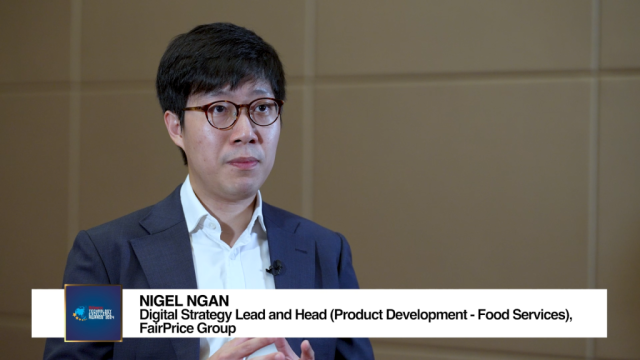
Family over money or money over family?
By Suresh Shah Family business
Family businesses are the ones that are owned and managed by one or more of the family members. These members have a significant ownership and majority of the control lies with them. Family businesses exist all over the world and some of them have been around for decades still maintaining the initial vigour and dedication.
Some of the oldest business firms are family-owned. For example, Kongo Gumi of Japan is currently managed by the 30th generation and in the contemporary times Wal-Mart of US is a fine example. These businesses are value-based.
To successfully manage a family business requires lot of competencies and commitment. Some of the skills required can be conflict resolution, managing finance, managing legal issues and so on. It’s not that every member of the family participates in the business and there is a certain hierarchy that is followed.
The challenges that these businesses face depend upon the size of the company and the extent of their operations (domestic or international).Though most of these businesses have family members managing the helm of affairs, with changing times, even non-family members are roped in to manage some aspects of the business. Moreover, the participation of women in family businesses has increased and in the past few years, women-led businesses have grown.
It is obvious for any family business to have difference of opinions among members but though there might be minor differences, the family and business are united. Such businesses have been extremely successful. Examples are Godrej Group and Tatas (India). But instances of business empires fragmenting are also many. A classic example is that of Reliance Group of companies founded by Dhirubhai Ambani (India).
Historically, many successful family businesses have broken up by second or third generation. It is said that the first generation establishes the business. Second generation grows it; whereas, in most cases, third generation dissolves it. Decisions made in the boardroom could change overnight on the dinner table at home.
Family business can be defined in many ways. Let us refer only to those businesses lasting over two or more generations and have existed for more than ten years.
· Family business account for more than 80% in the world
· Fortune 500 companies include 37% family businesses
· More than 60% GDP is contributed by family business in the world
· Family business create 90% employment (manufacturing) in India
· BSE 500 (Bombay Stock Exchange Index) includes 346 family businesses out of total 500 companies (69%)
· In other words, 54% of market capitalization is from this category
· Research statistics show that only 30% family businesses go further to next generation. This means 70% family businesses close after the founder generation, or divides if not sold off.
· Hardly three to four percent reach third generation
· However, there are examples of businesses running up to around 20 generations in Italy and Spain
What causes the split?
1] Banks, Financial institutions, or Private equity firms are now providing the capital finance. As a result, the business persons do not have to depend only on financing from the family.
2] Role models for new generations have changed. Head of families are no more remaining only role models. As a result, they split.
3] Sometimes collective thinking is missing.
4] Sometimes the main business director (usually, head of the family) cannot remain transparent in maintain balance between contribution (from the members) and compensation payable.
5] Appointing a successor can also become the cause for the split.
6] Unclear or incomplete communication can also create conflicts.
7] Many a times, a dispute starts from spouses, e.g. when elder brother travels in economy class on a business trips; whereas, the younger one always goes by first class. Thus, influence of spouses can disturb the setup.
8] Another example is a well educated girl marrying in a business family, and starting show off or being proud of her education. Slowly the other members of the family start keeping distance from her. This resulted in a split in brothers and joint family business was to be separated.
9] Not agreeing on particular business strategy also can be reason for the split.
10] There are cases where after the split, separate businesses are incurring losses, and intend to join again; however, heads of families do not agree.
11] Many times, difference in values or business ethics can create disputes. For example, one of the members want to act aggressively, whereas, another one wants to continue in traditional way.
12] Sometimes, dispute arises in allocation of resources. One member wants certain people on her/his side. Or, another member is asking for more facilities.
13] When the founder member (usually, Head of the family) is alive, many differences do not surface. The Head of the family knows how to resolve and acts as a bonding factor. However, when the Head departs, the next eldest member takes the reins. Initially, there could be silent opposition against her/him from other members, and slowly it surfaces as disputes.
14] There are cases of family businesses, where members keep silence, or have only formal talk, and there are no frank or open discussions to resolve the issues. Slowly these lead to split up.
15] In India, during 1950 to 2005, around 32 big businesses have broken up.
What’s the solution?
When there are disputes in family business, the owners like to bring in relations or close friends as mediators. They hesitate to consult the experts for fear of losing confidentiality. Such mediators can make temporary solutions; they are not able to make structural improvement. Also, majority of them cannot remain objective.
If family business can adopt the Partnership structure, disputes can be reduced.
There can be an advisory council consisting of well-wishers, relatives, an external coach, and the one who can influence the family members. The council members should meet every quarter, and resolve disputes in time.
When values and beliefs are strong in the family, and new generation feels secured, the family businesses are not split up soon.
The external coach can assist to prepare policies for managing the family business, and implement procedures and systems, including decision-making process.
There should be either a Trust or a written constitution for managing family business.
Established brands can save family business. Even in disputes, the members do not want to disturb it due to fear of loss of brand value. They remain together even unwillingly, or try to resolve the issues.
Many family businesses follow the consultants’ advice and spend time together (with family members) on a resort or away from workplace. This practice helps for bonding.
In USA, more than 200 educational institutions include management of family business in their curriculum.
There are 15 to 17 Ph.D. in Finland on this subject.
One can adopt a western model. They form a Managing Trust for managing the group businesses. Trust cannot be dissolved easily; and therefore, the businesses go on for long. Head of family seems to be the overall head and decision maker, yet the owner is the Trust. Family members are the Trustees.
There can be downside of Managing Trust. Like it or not, all family members have to become Trustees. Since the Trust will make all the decisions, many members will stop taking active interest in the business. There is a risk of beaurocracy when the Trust cannot make decisions fast.
There is another example of Holding company formation for managing family business. Here, the family members are shareholders of the individual companies in the group. However, they have to follow the holding companies directives. For example, a member cannot sell her/his shares and loose the control over the company.
Few examples of large family businesses
Kongō Gumi Co., Ltd. (株式会社金剛組, Kabushiki Gaisha Kongō Gumi) is a Japanese construction company and was the world's oldest continuously ongoing independent company, operating for over 1,400 years until it was absorbed as a subsidiary of another larger construction company. Headquartered in Osaka, the once family-owned construction company traced its origins to 578 when one of the engineers whom Prince Shōtoku brought from Baekje to Japan to build the Buddhist temple Shitennō-ji decided to start his own business. Over the centuries, Kongō Gumi participated in the construction of many famous buildings, including the 16th century Osaka Castle.
A 10-foot 17th-century scroll traces the 40 generations back to the company's start. As with many distinguished Japanese families, sons-in-law often joined the clan and took the Kongō family name. Thus, through the years, the line has continued through either a son or a daughter.
The company fell on hard times and went into liquidation in January 2006. Its assets were purchased by Takamatsu Corporation. Before its liquidation, it had over 100 employees and annual revenue of ¥7.5 billion ($70 million) in 2005; it still specialized in building Buddhist temples. The last president was Masakazu Kongō, the 40th Kongō to lead the firm. As of December 2006, Kongō Gumi continues to operate as a wholly owned subsidiary of Takamatsu.
Matsushita Electric (1918) is another model in Japan for running large business (Panasonic and National brands) with a centralized holding structure and strategy decision. Though centralized as a group, individual group companies have profit responsibilities.
Cargill, an international producer and marketer of food, agricultural, financial and industrial products and services is a good example of family business running for long time. Founded in 1865, privately held company employs 131,000 people in 66 countries.
There are also examples of holding company structure where the holding company is not a shareholder. It is structured only for management of group companies. Again, this management is only strategic. Individual companies are responsible for operations and profits.
There is a trend of bringing in professionals for running group companies. The Holding company manages the business strategy and directions. Individual companies are managed by professionals who have profit responsibilities. Unlike typical family businesses, freedom of operations is granted to these professionals including manpower, materials, or machineries. Additional finance requirement is to be approved by the Holding company.
Suresh Shah, Managing Director, Pathfinders Enterprise

























 Advertise
Advertise









